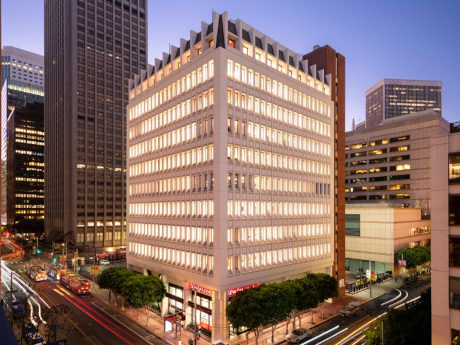— By Dina Gouveia and Louis Thibault —
The San Francisco market ended the second quarter of 2023 with a 27.2 percent vacancy rate for the office sector, according to Avison Young’s market report. As companies scaled back operations and experienced slower growth, vacancy rates continued to increase. As of late, we are seeing many tenants in a wait-and-see mode when it comes to leasing decisions. This is despite a majority of companies desiring to have employees back in the office.
Below are a few key trends and observations when it comes to the office market, as well as some green shoots where we see opportunities for an accelerated recovery.
Return to the Office
The slow return to office (RTO) largely comes down to overall economic conditions and who has the upper hand in the job market. The trend that we’ve seen in the San Francisco region is that larger tech companies like Apple and Google have led the RTO efforts with CEOs like OpenAI’s Sam Altman opining that remote work is essentially detrimental to collaboration and creativity. It appears there is a widespread appetite to bring employees back into the office full-time. As the job market continues to soften, CEOs are finding that the balance of power is starting to shift in their favor and RTO mandates are being met with less resistance.
Economic Conditions
Another contributing factor to San Francisco’s high vacancy woes is that, from an economic standpoint, many companies have been more conservative with spending over the past 18 months due to less venture capital funding or the inability to borrow money as freely because of higher interest rates.
Pre-pandemic, companies would frequently secure larger blocks of space than needed, anticipating impending expansion due to the common growth-first mentality. Historically, with a shift in economic conditions, these same companies would simply put that space on the sublease market. Avison Young’s data shows the pre-pandemic office leasing market was ultra-competitive with vacancy rates at 5.3 percent in late 2019. As previously noted, it has since reached 27.2 percent. In addition, the average rent for Class A sublease space in 2019 was $80 per square foot, full-service, whereas it is now $62 for the same space with many subleases considered undesirable and expiring without a subtenant. Bottom line, once the economy improves and companies begin to feel more comfortable with their finances, we will see the San Francisco office market recover.
Market Movers
We anticipate a few big tech “market movers” to sign leases that exceed 50,000 square feet over the next six to 18 months. Once those announcements begin to happen, momentum will likely continue as small- to mid-sized companies follow suit. We also believe most mid-sized companies will continue to maintain a flagship in San Francisco. When the market starts to show early signs of stabilization, we will also see a run-up in companies tha couldn’t afford a location in the market finally stake their claim.
Growth Industries
Arguably the most exciting growth industry with San Francisco as the epicenter is artificial intelligence (AI). These companies for the most part have been circling the market but haven’t yet committed to significant leases, though a few have signed. AI and related industries like AR, robotics and consulting for these segments have been trending upward in market share. We expect to see the bigger firms take larger amounts of space between now and early 2024, which could translate into upwards of 500,000 square feet. San Francisco venture capital funding for AI was $3 billion in the first quarter of 2023 and in 2022. Additionally, California reported the most AI job postings at 142,154, followed by Texas and New York. Overall, the U.S. continues to lead in terms of total number of newly funded AI companies, seeing 1.9 times more than the European Union and the United Kingdom combined, and 3.4 times more than China. All this bodes well for the Bay Area.
The San Francisco office market is likely still bottoming out. We would hedge that most occupiers with leases expiring will renew with a short-term lease. Many tenants are also still working out the reset of layoffs, as well as true occupancy needs as companies determine RTO requirements.
While this region has had a series of hits since 2020, it is important to remember the Bay Area is the most innovative tech hub in the world. We believe it will recover as it provides a pipeline of top talent from local universities like UC Berkeley and Stanford, while also being an incredibly attractive destination for the nation’s top talent.
Dina Gouveia, Market Intelligence Manager, West Region, and Louis Thibault, Senior Insight Analyst, Avison Young


